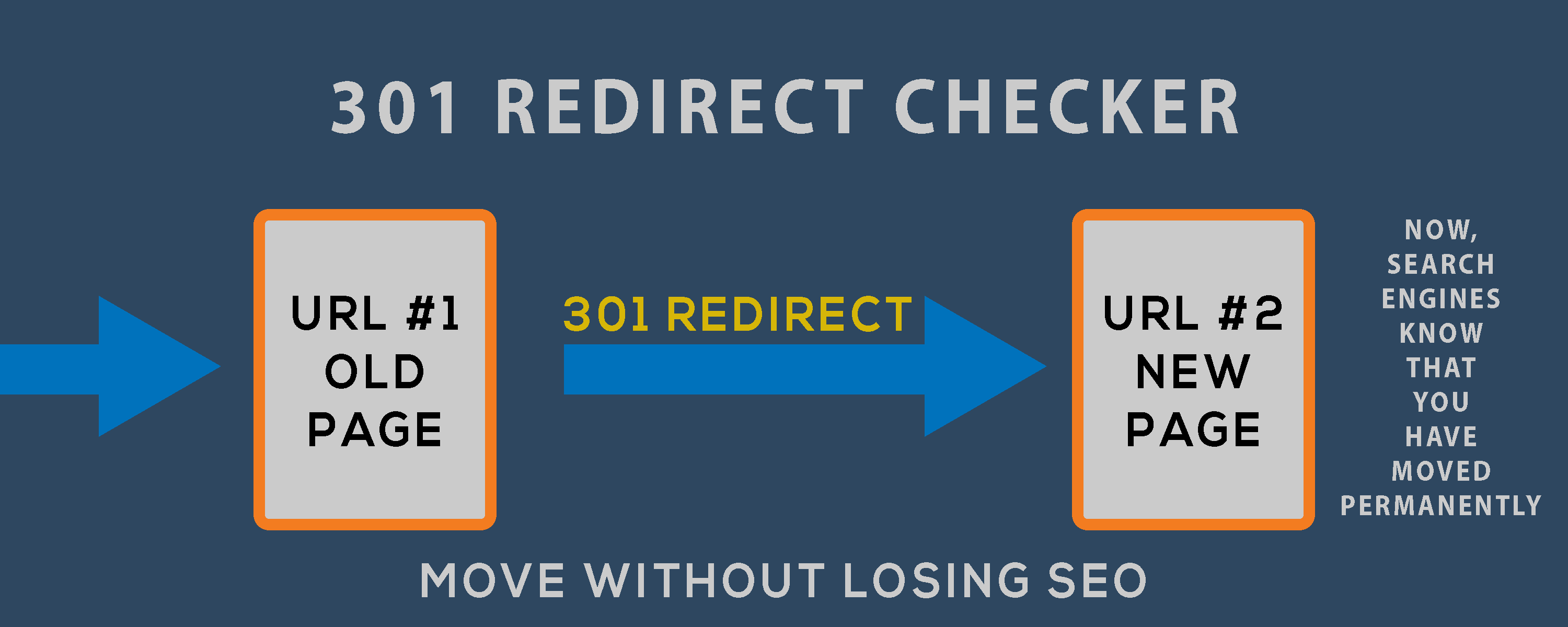301 Redirect Checker
Type your URL here and then press enter.
What is 301 Redirect Checker?
301 Redirect Checker is a free online tool to check the redirect status of a website/URL. It helps you see the redirect process step by step from the first page to the final page. The response codes will help you make sure that your website is using the SEO-friendly 301 redirects. This tool helps you find and prevent chains of 301 redirects. Try entering a URL in the above input column and press enter key.
Why is 301 Redirect important for SEO?
A website is like a living being, it gets updated all the time and sometimes you would need to change certain links. The right way to redirect these dead pages would be by using 301 HTTP response code as it lets search engine robots know that it's address was moved permanently. This means that they can update their search listing permanently to the new address instead of trying to load that dead page all the time.
It is just like informing your post office about the change of your address so that all new mails are forwarded to your new address. The 301 redirect code informs the browser and web crawlers that your site/URL has been permanently moved to the new address and it should follow all traffic to the new address. Check this page in which Google has made a detailed page just for 301 Redirect! 301 Redirect is very important for the SEO of a site because no one wants to see a broken or dead web page, so search engines like google uses every factor available at their disposal to rank a website. 301 redirect is one of them. So, make sure to check your site's 301 redirect to ensure that you are not making some huge SEO mistake.

Redirecting Canonical URLs
Canonical URLs are several URLs pointing to the same address of a website. This is a common SEO mistake that goes undetected by many developers.
It is very important that all variations of a website's URL point to the same URL. Search engines like Google might notice multiple
URLs showing the same page and consider it as duplicate content. This may cause Google to penalise your site's search rankings for having duplicate content. Search engines are getting better and better at identifying duplicate content, but it is your duty to make sure that there is no flaw in your website.
For example, a person
typing any of the below links should always be redirected to one URL.
- www.example.com
- example.com
- example.com/index.php
- https://www.example.com
- https://example.com
- https://example.com/index.php
Which type of redirect to use?
There are mainly five common ways of redirecting one url to another.
- HTTP 300 Multiple Choices - This http response code indicates that there are several responses but nothing is specified. And, it is letting the user-agent determine which one to use. HTTP 300 is rarely used because it is ambiguous and there are no standard ways of determining which code to use.
- HTTP 301 Moved Permanently - This is the most commonly used type of redirect. It specifies that the resource requested has permanently moved to a different address.
- HTTP 302 Found, the temporary redirect - It indicates that the requested resource has temporarily been moved to a different address. It redirects the browsers and user agents to the new URL, however, the search engines do not update their database with the new URL as they are expecting the old url to be live soon. Thus, the SEO benefit stays with the old URL.
- HTTP 307 Moved Temporarily - It indicates that the requested resource is moved temporarily to the new URL. The only difference between 302 and 307 is that it doesn't allow method change(POST to GET) by the client when it is being redirected.
- Meta Refresh - Unlike the above http redirect codes, this is a page level redirect and it is not done from the server level. So, it is very slow and is not recommended for SEO. This is often used by many payment gateways and travel sites where you see the message which says "please wait for 10 seconds or click the link here."
How to redirect http/www to https/non-www?
The best way to do it is by editing the .htaccess file of your website. It is a file named '.htaccess' found at the root directory of your website. If you are using a cpanel hosting then you may want to go to the settings of the file-manager and enable visibility of hidden files. If .htaccess file doesn't already exist, then just create a new file and name it '.htaccess'. (Note that it is a dot followed by the word htaccess) And, copy paste the following code to the top of .htaccess file.
RewriteEngine On
RewriteCond %{SERVER_PORT} 80
RewriteRule ^(.*)$ https://example.com/$1 [L,R=301]
RewriteCond %{SERVER_PORT} 443
RewriteCond %{HTTP_HOST} ^www[.].+$
RewriteRule ^(.*)$ https://example.com/$1 [L,R=301]
# index.php or index.html to /
RewriteBase /
RewriteRule ^(.*)index\.(html|php)$ http://%{HTTP_HOST}/$1 [R=301,L]
This will redirect http+www, http+non-www and https+www to https+non-www. It will also redirect index.php or index.html to the main domain. This is the code you should use if you have an https domain and want to point it to non www version of the site.
How to 301 redirect www to non-www?
If you want to redirect http://www.example.com to http://example.com, you can use this code:-
RewriteEngine On
RewriteCond %{HTTP_HOST} ^www\.example\.com$
RewriteRule ^/?$ "http\:\/\/example\.com\/" [R=301,L]
How to 301 redirect non-www to www?
If you want to redirect http://example.com to http://www.example.com, you can use this code:-
RewriteEngine On
RewriteCond %{HTTP_HOST} !^www.example.com$ [NC]
RewriteRule ^(.*)$ http://www.example.com/$1 [L,R=301]
In all the above cases, remember to change example.com to the name of your domain name.